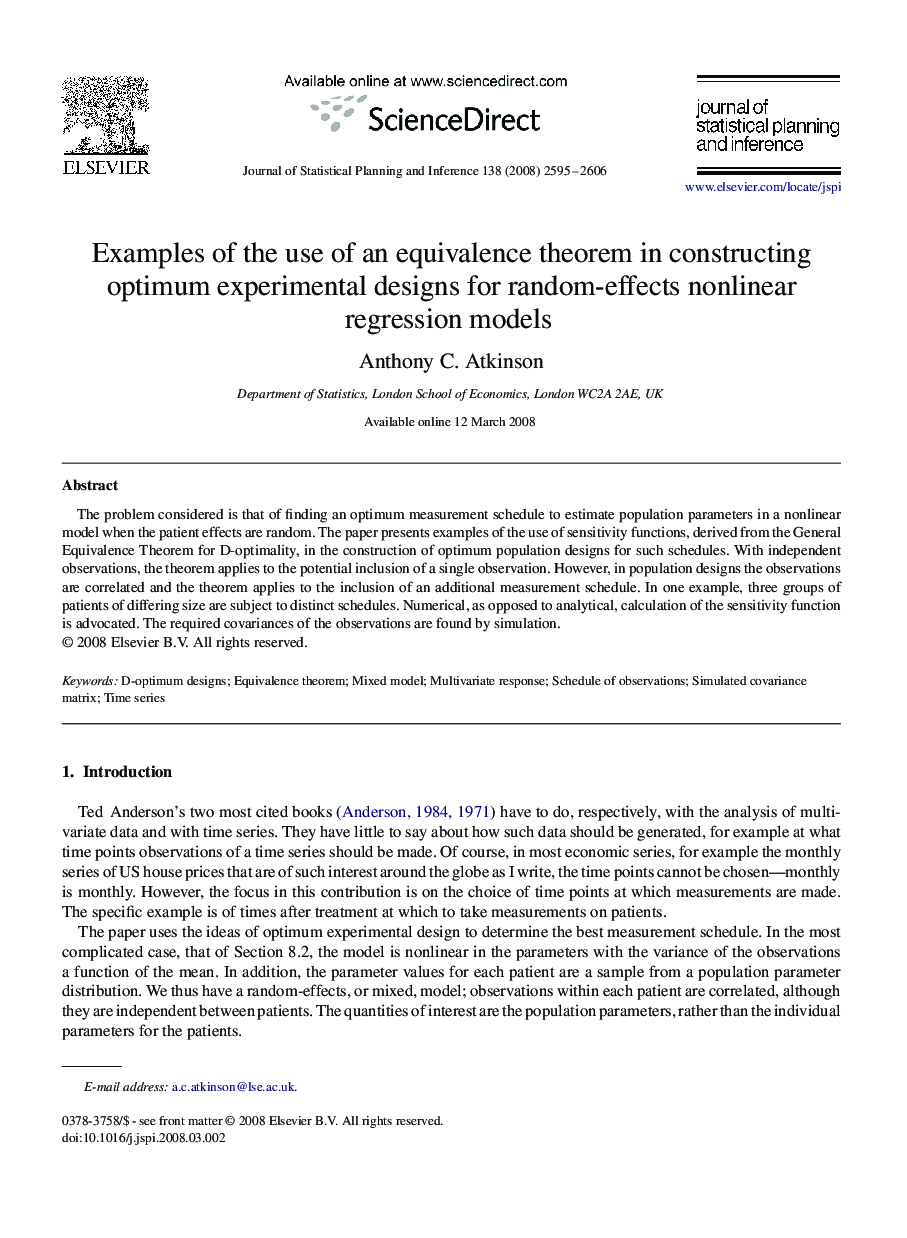| Article ID | Journal | Published Year | Pages | File Type |
|---|---|---|---|---|
| 1148333 | Journal of Statistical Planning and Inference | 2008 | 12 Pages |
Abstract
The problem considered is that of finding an optimum measurement schedule to estimate population parameters in a nonlinear model when the patient effects are random. The paper presents examples of the use of sensitivity functions, derived from the General Equivalence Theorem for D-optimality, in the construction of optimum population designs for such schedules. With independent observations, the theorem applies to the potential inclusion of a single observation. However, in population designs the observations are correlated and the theorem applies to the inclusion of an additional measurement schedule. In one example, three groups of patients of differing size are subject to distinct schedules. Numerical, as opposed to analytical, calculation of the sensitivity function is advocated. The required covariances of the observations are found by simulation.
Related Topics
Physical Sciences and Engineering
Mathematics
Applied Mathematics
Authors
Anthony C. Atkinson,
